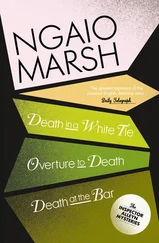Conquest also brought drastic social changes, one being that Andeans were expected to exchange resources, silver, and gold with Spain. Many of the ties across the Andes were diminished as others were created from the mountains to the coast and across the Atlantic. During colonial and post-colonial times, large cities were established along the Pacific and Atlantic coasts of South America. Trade routes were established between coastal ports and interior cities. A major route was established between the oceans from Lima, through Cuzco, across the central Andes to La Paz, to the mines of Potosi and Sucre, and down across Argentina to Buenos Aires. Infected vinchucas, animals, and humans traveled this and other routes until all the countries of Latin America had Chagas’ disease.
Vinchucas had become a nuisance in Chile in the 1800s. The following is a translation of Rodolfo Amando Phillippi’s Viaje al Desierto de Atacama hecho por orden del Gobierno de Chile en el verano 1853:
Fleas and lice are not found in Atacama, and the natives assure me that these animals die whenever they are introduced by chance. Instead of these, the houses abound with vinchucas. It is a species of flying bug with very large legs; its length is 11 lineas, but it is very slender, of dark color. They rarely fly, and during the day they principally hide in the thatch of the roof where they descend at night to feed themselves on human blood. Their bite does not cause pain, but sensitive people develop boils that become inflamed for several days, accompanied by a species of fever. If a vinchuca is squashed, it leaves a very black mark that never can be removed. One morning, I counted in my bed forty-one vinchucas between large and small. They appear to belong to various distinct species, and there are some rare ones in the middle of the desert (Amando Phillippi 1860:54).
This account indicates that vinchucas continued to infest houses in the nineteenth century. The author also makes the point that vinchucas colonize areas not frequented much by other insects; he also emphasizes the insects’ abundance.
An important factor in the spread of Chagas’ disease was the political economy of colonization, accompanied by impoverishment of people, destruction of land, and attempts to replace Andean culture with European and American culture. It is no wonder that Andeans still refer to foreigners as “ vinchucas.”
Andean Indians celebrated the quincentennial of Columbus’s discovery of America with sorrow because of their perceived destruction of the New World. Some Bolivians designed a flag for the occasion. Written on this flag, which symbolizes a pan-Andean nativistic movement, is the word “ Pachacutej” (“reversed time”) and “500 years.” An Aymara leader explained its significance: “For five hundred years we have suffered diseases, poverty, and destruction of land which started with the Conquest. Now, we have to travel five hundred years back to return to what has been taken away by others.” Bolivians of all classes are working towards restoring the values, beliefs, and practices inherent in Andean culture. One finding of this book is the importance of renewing certain Andean traditional patterns to help prevent Chagas’ disease. These patterns involve environmental factors that impinge upon housing, herding, and farming, and that in turn are related to parasites, insects, mammals, and humans. Restoration of cultural values can help Bolivians get rid of the “ vinchucas.”
CHAPTER THREE
Jampiris and Yachajs : Andean Ethnomedicine
Kallawaya herbalists have dealt with the symptoms of Chagas’ disease for many years. Kallawaya herbalists and diviners practiced as early as the Wankaris and Incas, with a healing tradition that dates back to A.D. 500. Even today, these diviners and traveling herbalists are recognized for their curing techniques in Argentina, Bolivia, Chile, and Peru (see Bastien 1987a). Kallawayas live in the Province of Bautista Saavedra in northwestern Bolivia near the Peruvian border. Approximately 120 herbalists (jampiris) and sixty diviners (yachajs) continue to practice the rituals and herbal healing that have been passed down by their ancestors for over a thousand years.
Andeans have effectively adapted to Chagas’ disease for thousands of years, illustrating that traditional medical systems can work independently of biomedical systems, and perhaps even more efficiently and economically, and that it is not necessary that Andeans understand Chagas’ disease in terms of Western biomedicine. Conversely, Americans rarely understand how Kallawaya medicine operates. Medical systems are peculiar to different cultures, as they function within environmental and sociocultural parameters. Kallawaya curanderos, for instance, provide valuable lessons about the relationship of disease to environment. They symbolically express that Chagas’ disease spreads through deforestation, impoverishment, and urbanization bringing T. cruzi, vinchucas, animals, and humans into proximity. Chagas’ disease results from this disorder and must be washed away in the river. These ancient medicine men drive home the lesson of an uncared-for earth.
Misfortune Ritual: Dispelling Chagas’ Disease
The following “misfortune ritual” of a Kallawaya warmiyachaj (woman diviner) illustrates how ailments of Chagas’ disease can be seen to reflect the forces of nature. It is derived from contemporary research of rituals among the Kallawayas from 1963 to the present (see Bastien 1978, 1987a, 1992). Pseudonyms are used and the account is narrated in the first person. The patient’s name is Tika, “flower” in Quechua. Tika tells about her ailments:
Chuyma usu [heart disease], I asked for a yachajs [soothsayer] to read the coca leaves and the bowels of a cuy [guinea pig] to see why my ajayu [spiritual fluid] and vira [fat: material energy] do not flow back and forth between the earth. Why my chuyma [heart] gets bigger and bigger…
The yachaj spoke with Pachamama [Mother Earth], who said that my chuyma contains fluids that must flow down the river like my yawar [blood] used to flow. Yawar, ajayu, and vira have stopped. I must call a Jampiri [herbalist] and a Warmi Yachajs to perform a sajjra mesa [misfortune ritual] to the mayu [river].

Figure 10.
Kallawaya jampiri or herbal curer. Approximately 120 Kallawaya herbalists live in the Department of Bautista Saavedra, Bolivia. They travel throughout Andean countries treating people with Chagas’ disease and other illnesses. They practice a thousand-year-old tradition and use over one thousand plants. (Photograph by Joseph W. Bastien)
Tuta Korota, a warmiyachaj, was called to perform a sajjra mesa. The first part of the ritual was performed in the cooking room of Tika’s house to dispel the misfortune with the wind; the second part was performed near the river to wash the misfortune away. A woman performs sickness rituals to the wind and river due to her structural position in a society in which she marries and moves away from her matrilineage but in which her daughters marry and return to their mother’s land. She links the generations in marriage in a movement away and yet continuous. According to age-old traditions, women are linked with misfortunes, both causing as well as removing them. So, too, rivers wash away misfortunes but also restore. Rivers form the boundaries of the land. The configuration of Cuzco as the body of a puma was defined by rivers flowing through the capital of the Incas (Rowe 1967). Rivers are also seen to traverse the heavens and netherworld. The Milky Way is believed to connect the stars across the sky. Concomitantly, it is believed that underneath the ground are rivers along which the dead travel on their return to the earth (Bastien 1978).
Читать дальше













